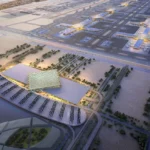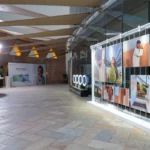
Middle East designated leading innovation hub by latest Arthur D Little report with Saudi Arabia set to pursue further innovation and entrepreneurial districts

- Saudi companies are benefitting from a concentrated innovation ecosystem and supply chain in a single district
- The Middle East houses a multitude of proven Innovation Districts and centers
- Arthur D. Little shed lights on imperative steps before future projects are pursued
Dubai, UAE – 13 September 2021: In the new post-pandemic world of work, Innovation Districts are well-positioned to thrive. With businesses and organizations co-located in physical space for complex supply chains, they can provide flexibility, enable serendipity, and foster innovation for decades to come. However, Innovation Districts must first focus on particular success factors before their full potential is realized. Arthur D. Little (ADL), the leading management consultancy firm with the longest-standing presence in the Middle East region, expounds this viewpoint in their latest report entitled The Future of Innovation Districts. The publication explains what property owners, municipalities, policymakers, and potential corporate tenants should look for when creating and choosing a world-class Innovation District, elaborating on essential fundamentals and presenting executives with valuable sustainability insights.
“How organizations innovate and their location when pursuing new projects have both changed significantly in recent decades due to convergence and disruption,” explained Dr. Raymond Khoury, Partner and Technology and Innovation Management Lead at Arthur D. Little Middle East. “Rather than closed innovation models, more and more companies have begun opting for open approaches involving cross-industry partnerships and engaging ecosystems. This trend has instigated an underlying need for suitable physical locations where innovation can transpire, ultimately leading to the birth of the Innovation District concept.”
Typically located in urban areas, Innovation Districts are focused on driving inter-firm linkages, collaborations, and networks that are enabled and sustained by a wider ecosystem for innovation. They include a wide range of businesses, from startups to large corporates, and are more physically compact than potentially sprawling innovation clusters. Crucially, the Middle East is home to several Innovation Districts that have delivered successful business outcomes.
In Saudi Arabia, King Abdulaziz City for Science and Technology (KACST) funds technology development and product commercialization, while Riyadh Digital and Innovation District (RDID) is a planned development to foster a future-centric ecosystem of digital entrepreneurship. The Saudi Data & Artificial Intelligence Authority (SDAIA) also aims to build an AI Village in line with National Strategy for Data & AI (NSDAI) objectives. The AI Village will act as a catalyst for NSDAI, providing innovators and researchers the proper infrastructure, services, and network to succeed. It will enable the activation of data and AI startups, facilitating valuable knowledge sharing while complementing existing initiatives and assets in the Kingdom.
“Innovation is high on the agenda for leaderships and economies across the Middle East. Therefore, the number of existing centers and projects planned for the coming period is welcoming and understandable,” said Philip Webster, Principal, Technology and Innovation Management Practice at Arthur D. Little United Kingdom. “Those that have already demonstrated success boast robust transport connectivity, proximity and density, flexible accommodation, and access to both talent and innovation services. The importance of these common characteristics should always be appreciated before establishing new Innovation Districts, as should numerous successful factors before green-lighting development.”
The Future of Innovation Districts examines why unique selling points (USPs), high-quality talent pipelines, occupancy curation, supply chain representation, and a long-term vision for value and wealth creation are all imperative to Innovation Districts’ sustainability, practicality, and success. The creation of effective technology transfer operations and mixed-use, flexible, and reconfigurable buildings is also discussed before the viewpoint concludes with a call to action section for particular Innovation District ecosystem players.
“With more executives, university leaders, and local government officials becoming involved in the creation and operational processes, it would be prudent to adopt an articulated focus, promote a world-class proposition, and drive innovation through opportunities creation,” added Dr. Khoury. “Every Innovation District must go above and beyond to surpass traditional business parks and differentiate themselves by accommodating every factor key to success.”
A full copy of the report can be found here.















































